9 utility room design mistakes and how to avoid them
Planning your dream laundry space? Make sure to steer clear of these design disasters

They're the must-have room for any busy family home, and as utility rooms rise up the wish-list for many homeowners, it's a space you'll want to get working straight away. This means avoiding common utility room design mistakes to create the ideal laundry set up.
While you might be looking for utility room ideas on how to style up your shelves, or make a small space work harder, it's important to know the things to avoid too, when planning your practical laundry room.
We've put together our own tips, plus asked the experts to shed some light on the utility room design mistakes we should all avoid...
Utility room design mistakes to avoid
1. Getting the location of your utility room wrong
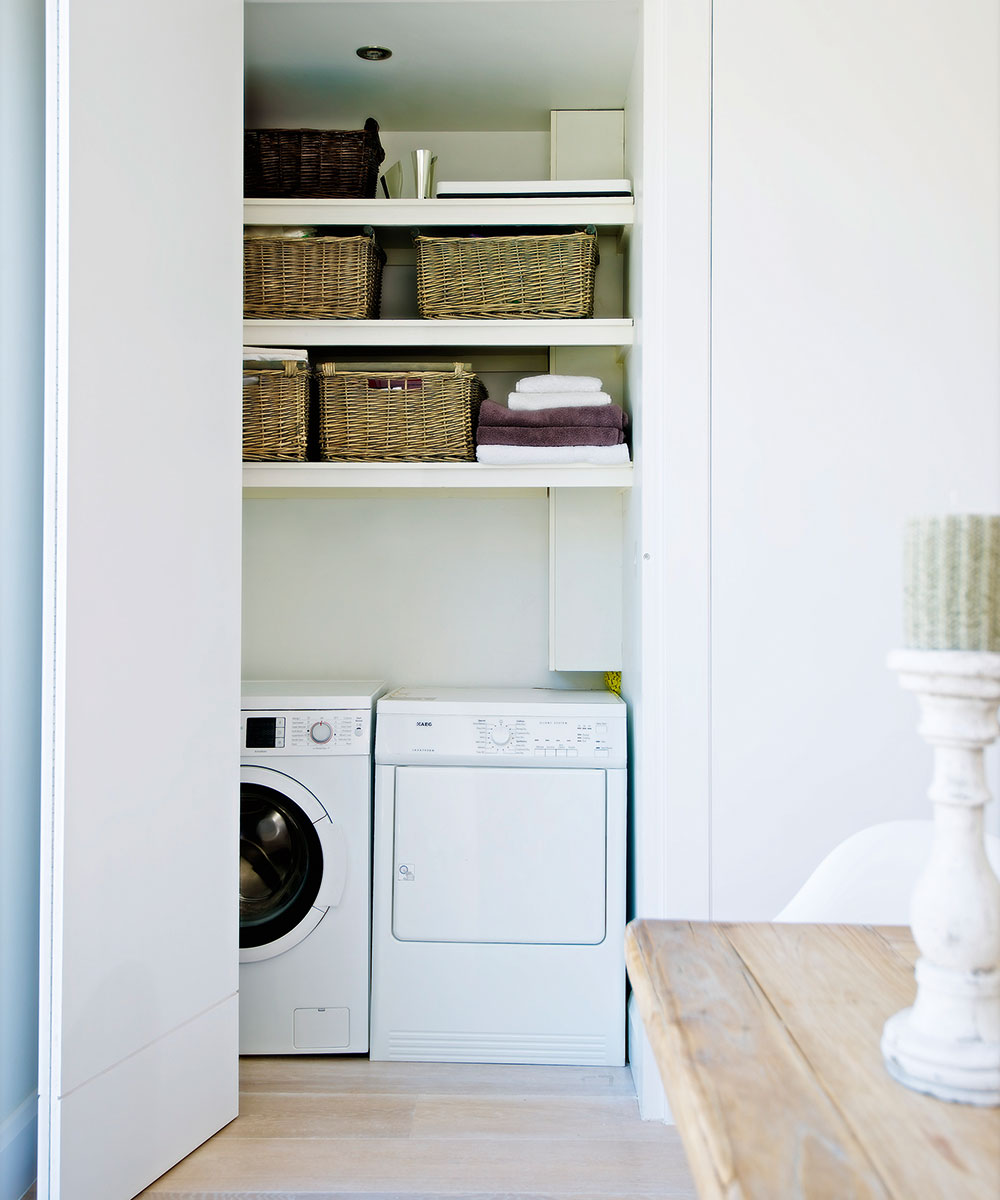
Whether you have a dedicated room for your utility essentials, or just a tucked away cupboard or bathroom corner, it's all about getting it's position right.
Grame Smith, Head of Retail and Commercial Design at Life Kitchens says, 'A common mistake is not carefully considering what function you are going to use the space for and location of it in the home. A utility room could be located towards the centre of the house, not too far from the bedrooms as most of your washing will come from these.'
'With the acoustics of appliances running in mind, you may alternatively wish to locate it away from a room where you entertain and socialise.'
2. Opting for bad lighting
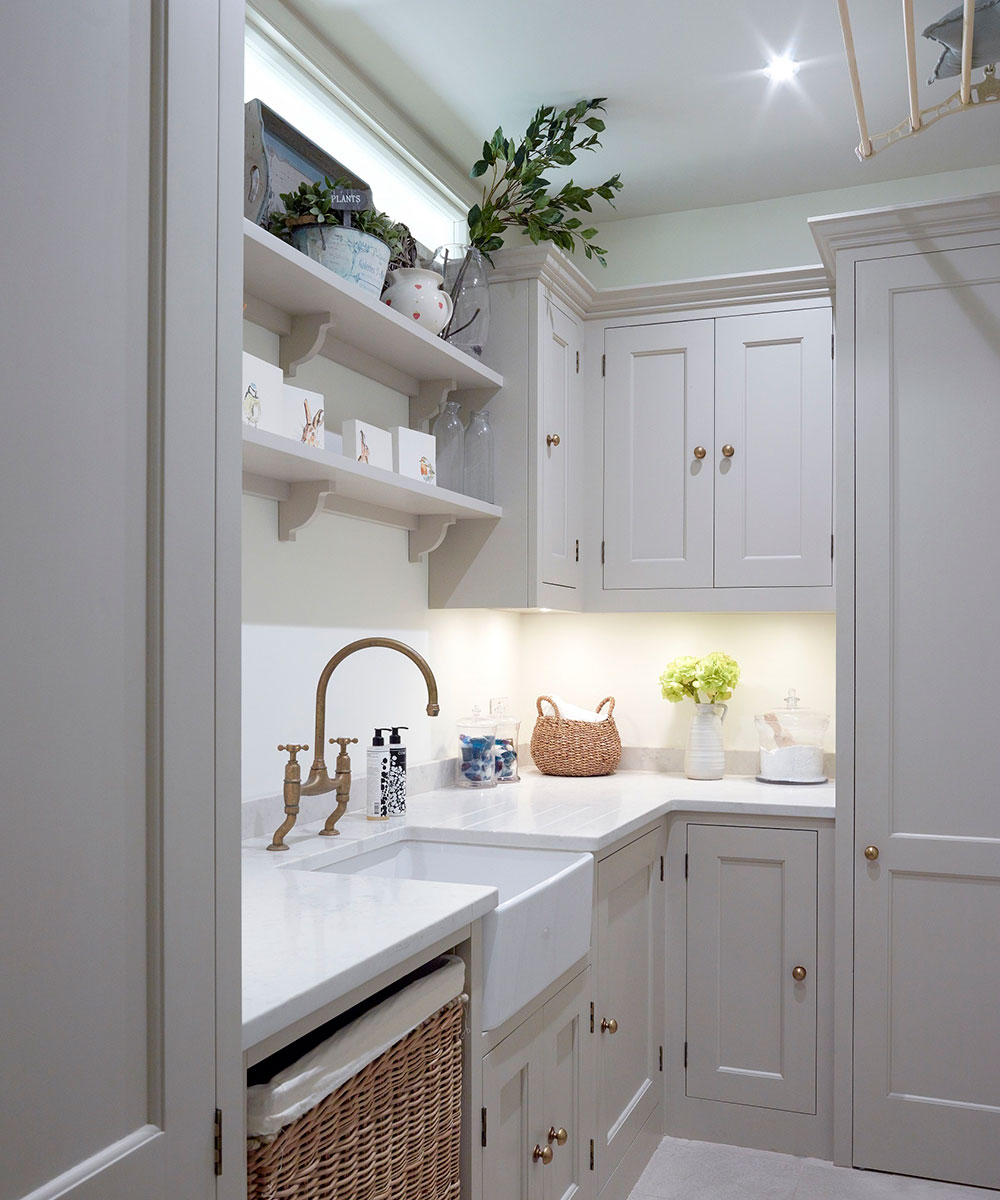
As one of the most practical rooms in your home, this isn't the place for mood lighting. During the planning process be sure to consider your lighting options, as poor lighting can lead to clothing stains not being spotted and care labels not being read properly.
Sign up to our newsletter for style inspiration, real homes, project and garden advice and shopping know-how
Under cabinet or shelf lighting is great if the space is on the smaller side and there isn't a huge space for spot lights on the ceiling. Opting for wall lights can be aesthetically pleasing, but think about supporting these with bright ceiling lights for dark days in the winter when natural light levels are at their lowest.
3. Forgetting to measure your appliances
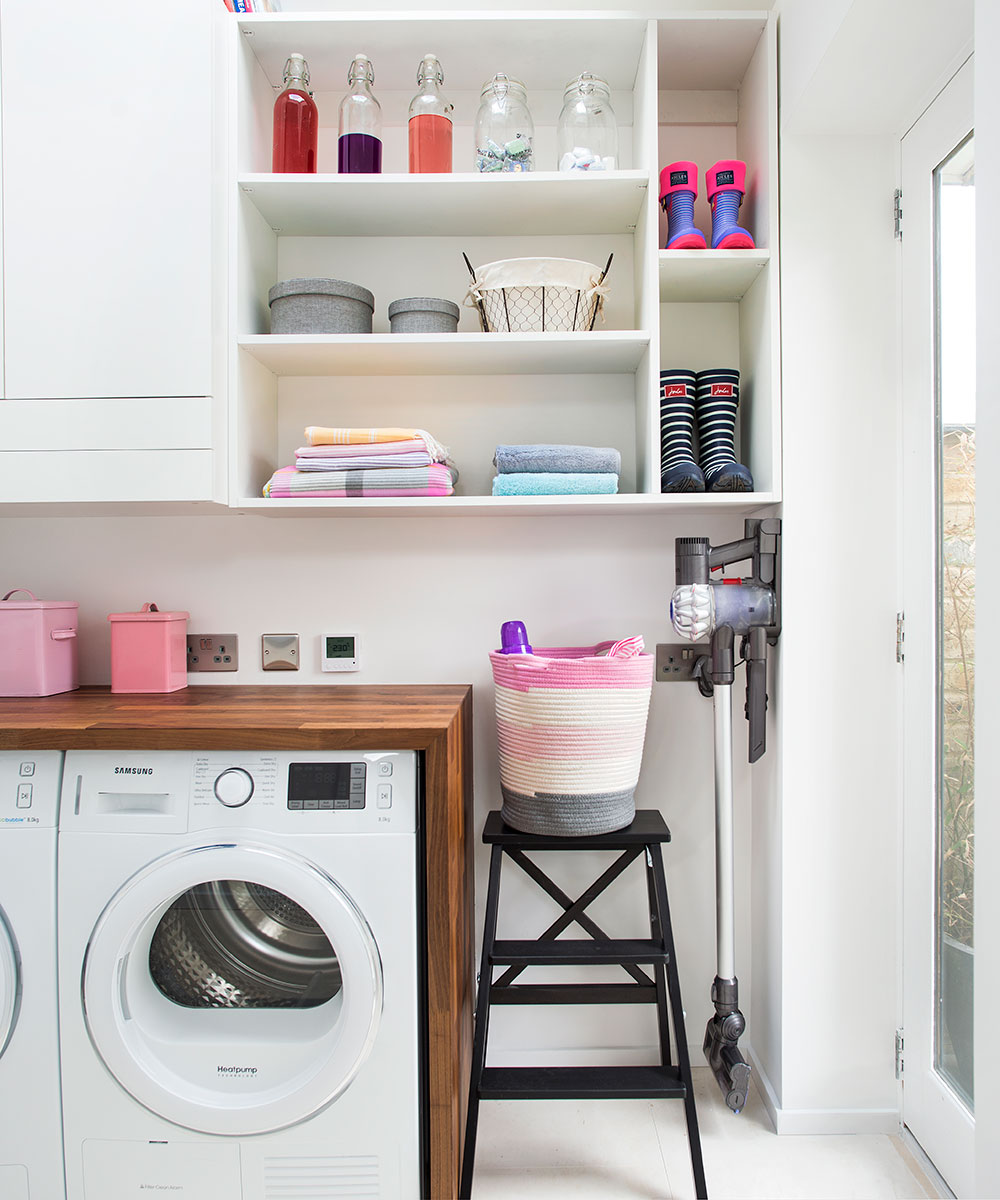
Before building your utility space, think about exactly what will be going in to it and where. 'One common mistake that so many people make is not measuring up their appliances before designing their laundry room', says Vicky Silverthorn, Professional Organiser at You Need a Vicky.
'You need to think about what you want to store, be it your ironing board, mop, hoover or laundry baskets and make sure you measure their dimensions before you design your space. It's no good going for an off the peg design and then expect your items to fit, they won't, and you'll be gutted if your smart utility space is ruined by a washing machine that doesn't fit in it's designated spot.'
4. Not utilising the space you have
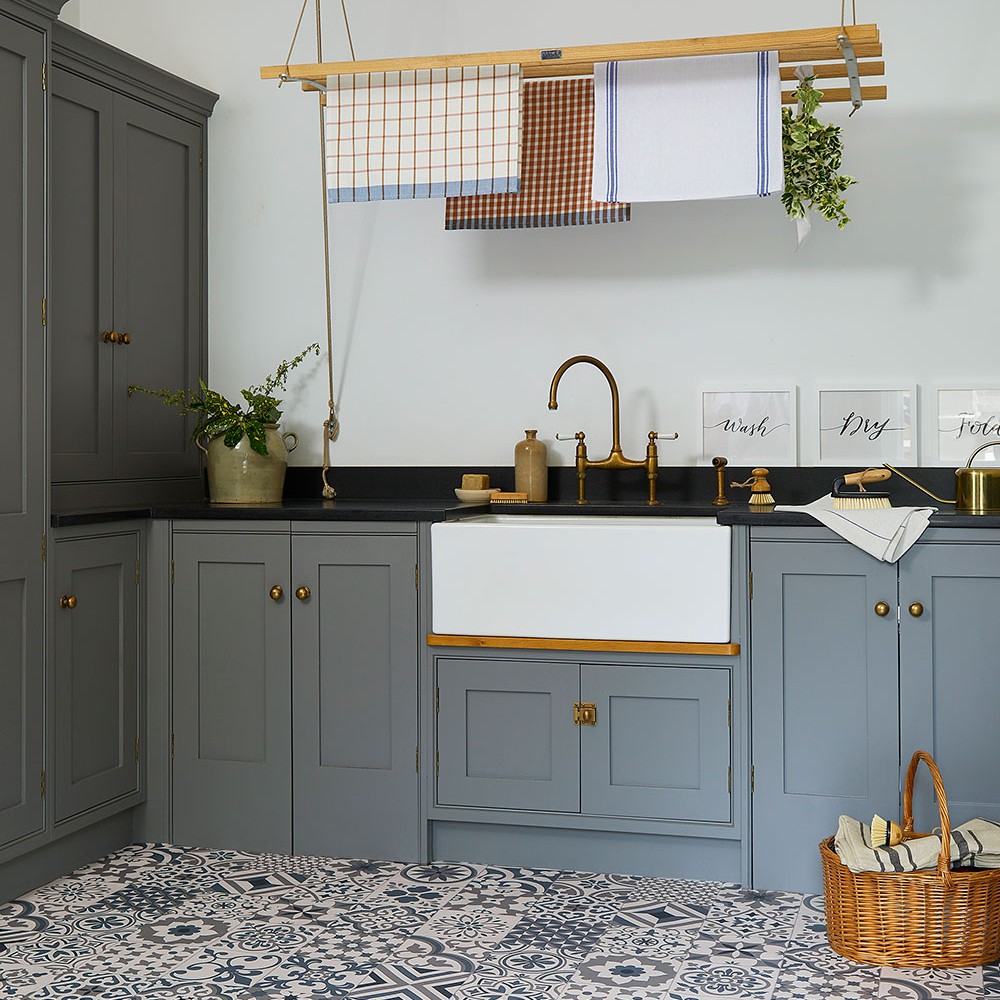
Whilst most utility rooms are often on the small side, that doesn't mean you can't max out their potential to give you all the drying space you need for your laundry. If floor space is lacking, think about rigging up a hanging clothes airer from the ceiling on a simple pulley system. This way the floor is left clear of clutter but your clothes can still be drying inside on wet days.
Another tip is to stack your washing and dryer, rather than placing them side by side. Again this saves on floor space and make the most of the height of the room rather than the width. a great idea to free up space in a narrow utility room idea to maximising compact space.
Where you can, always opt for a deep sink so you can soak more in one go. You can always use the space below it to keep cleaning products too.
5. Getting the finishes wrong
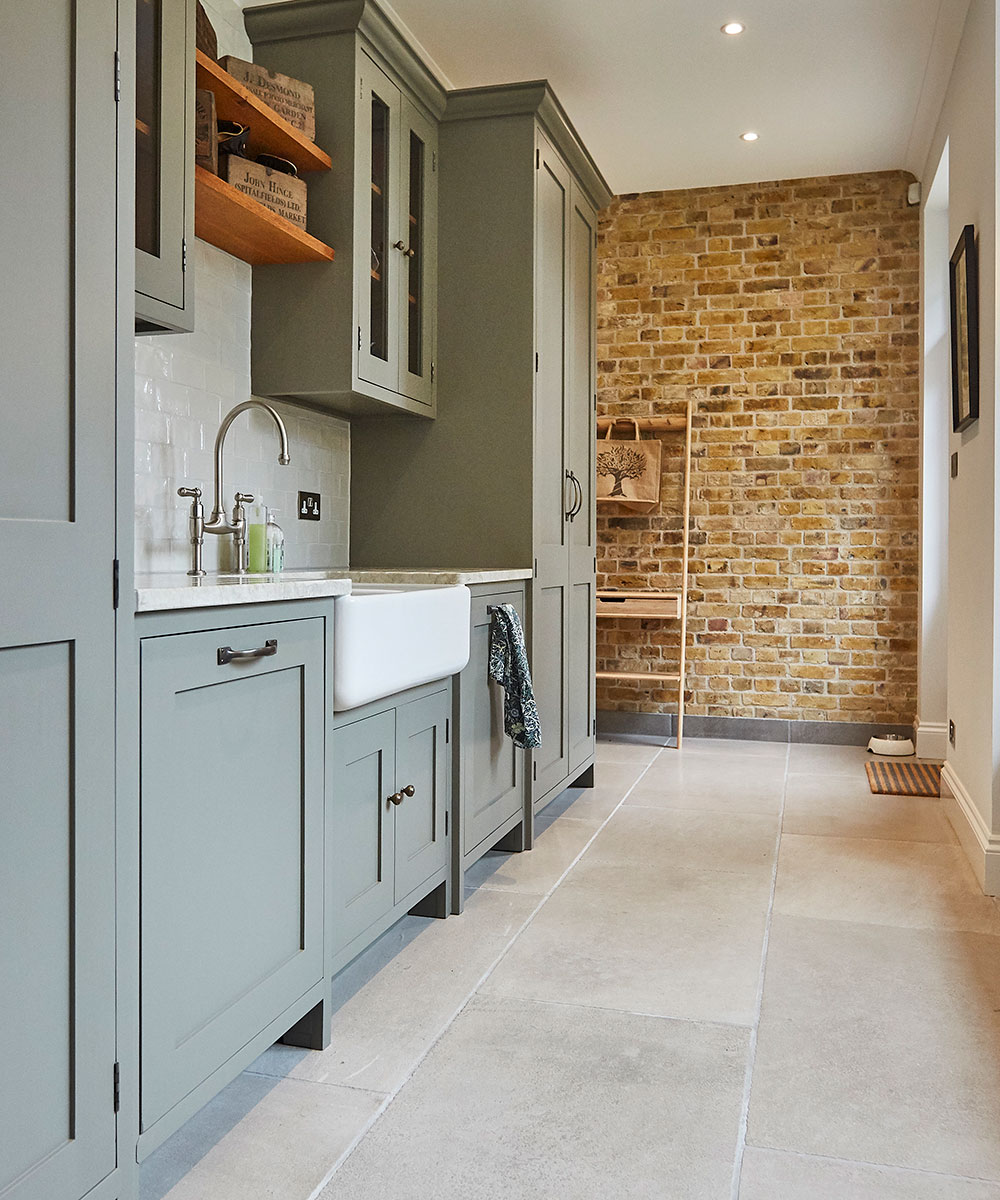
It's worth planning out all the details of your utility room, even down the colours and finishes too.
Alex Main, Director at The Main Company advises, "When planning your utility room design, choose cabinets mainly in a painted finish as this gives the flexibility of a complete makeover if you decide to dramatically change your colour scheme later down the line. It also means even if you want a quick, subtle change, it's much easier to do'
6. Neglecting a practical layout

When it comes to the layout of your utility space, its so important to get this right. There's no point having a washing machine tucked in a corner where you can't easily get the washing out, or cupboards that open the wrong way for you to see whats inside.
You also need to think about where electrical sockets are, or can be put, plus where your waste pipe is plumbed in too. And of course you'll want it all to look nice and neat too.
'Layout is crucial to get right. Plan carefully so that it's absolutely perfect for you and your lifestyle- it needs to be both functional and somewhere that you love walking into,' says Alex.
7. Not making use of open shelving
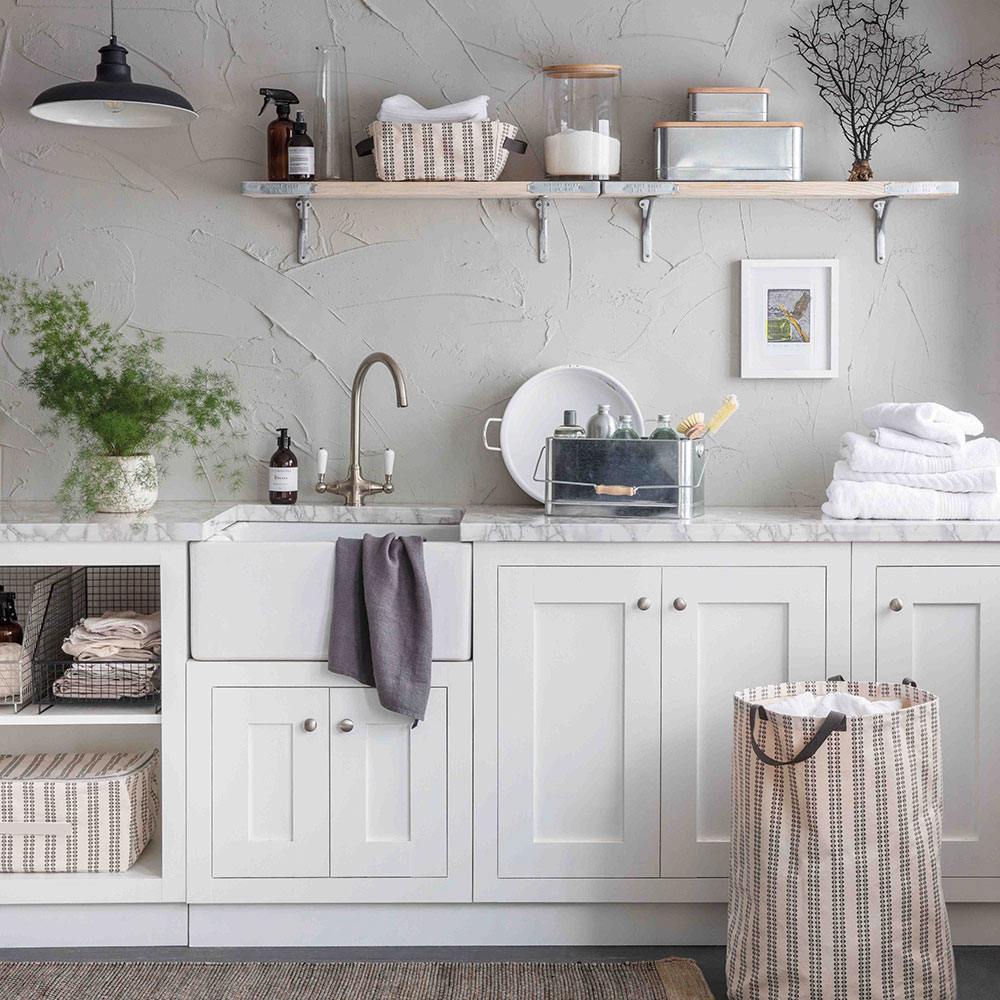
Open shelving is a great way to utilise wall space in a utility room. As well as make a display of your prettier cleaning paraphernalia.
Try decanting washing tablets into glass jars or keeping washing powder in galvanised storage pots. Cleaning products such as sprays could be hidden away inside cupboards but room sprays and linen water look pretty displayed on shelves, so keep these out and at hand.
This simple storage solution is perfect as a budget utility room idea to create an affordably beautiful laundry space.
8. Forgetting to leave space to sort the laundry
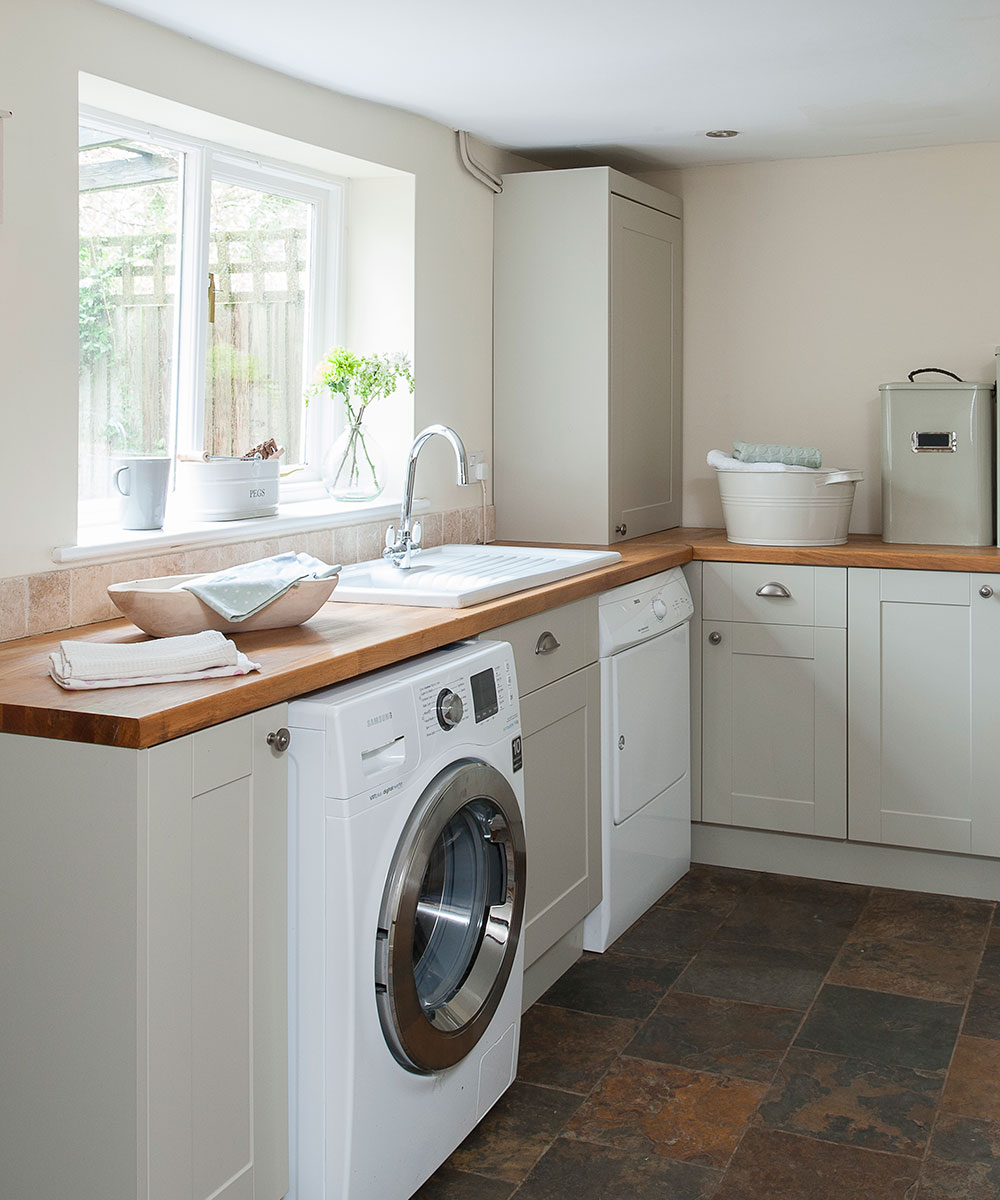
For a successful utility room, it's important to have surface space to sort the laundry before and after washing. Worktop space also gives you a place to fold clean clothes or even apply stain remover before popping them in the wash, so try and leave worktops clear of clutter.
If space is tight, look to get a sink cover board which turns your basin and draining board into a flat surface. This can be easily removed when you need to use the tap.
9. Leaving hard floors bare
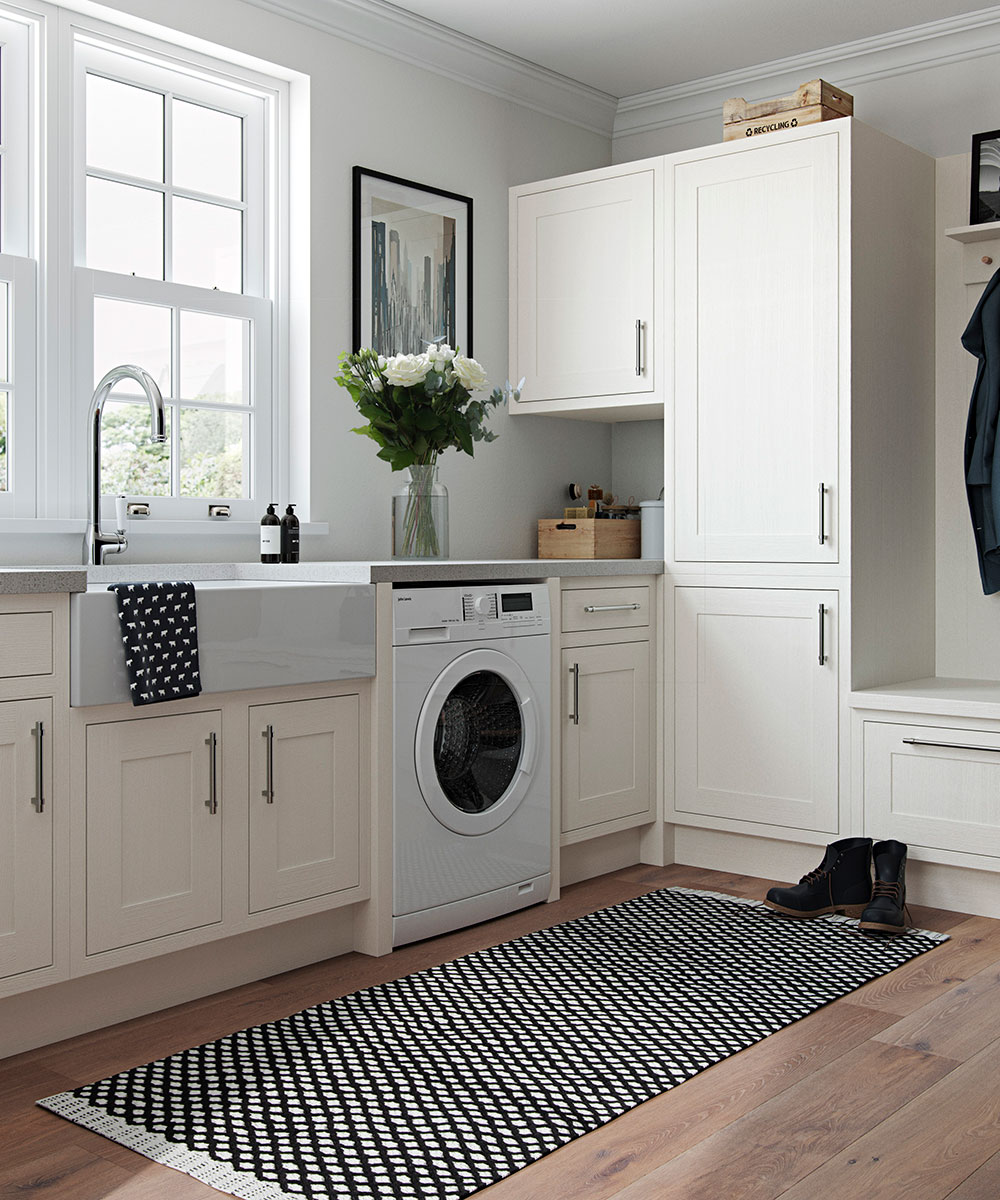
Utility rooms can often feel chilly due to the lack of soft furnishings. By adding in a rug, not only will it keep your feet warm, it will also help with stopping any drafts that might come up through the floorboards. Plus it will help with absorbing sound, making it less noisy.
It will also be kinder on your knees when you are bending down to fill and empty the washing machine. Use an anti-slip mat underneath to ensure the rug stays in place. Try choosing a design with some pattern to help elevate the room.
What are the most common utility room design mistakes for laying out?
We asked William Durrant, owner of Herringbone Kitchens to give us the inside scoop on where mistakes are often made.
- 'Forgetting space for folding clothes. This is one that is often overlooked but one we find so important in our design. Making sure you have a workspace for folding clothes shouldn't be forgotten, so they don't have to put on the floor before folding, and it keeps them all in one place.'
- ' No space or area for hanging clothes to dry. Not everyone has a dryer and not everything can go in a dryer even if you do. So if you don't have space in your utility room for a clothes horse on the floor, try finding hanging space instead. Again it keeps the room tidy, functional and not spilling out into other rooms.'
- 'Not considering space for dirty hampers. Again this is something that is often overlooked, however open cabinets are incredibly useful for this'
Avoiding these common utility room design mistakes will ensure your laundry room is a dream to be in.

Holly Walsh is a freelance Interiors Writer and Shopping Editor, but worked in-house here at Ideal Home for nearly 10 years. With a background of studies in Interior Design, her career in interior journalism was a no-brainer and her passion for decorating homes is still as strong now 15 years after she started, as it ever was. While Holly has written for most of the home titles at Future, including Livingetc, Country Homes & Interiors, Homes and Gardens, Woman & Home and Style at Home, Ideal Home has always been her ideal home, and she can still be found sharing her expertise and advice across both the printed magazine and the website, while also raising her two young children.